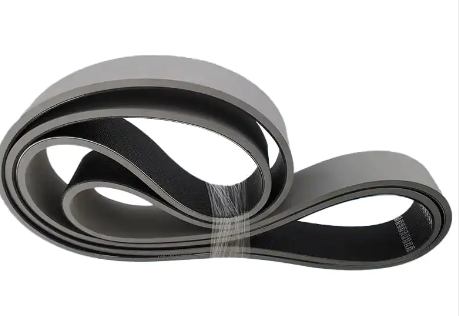Content
In the field of modern woodworking machinery manufacturing, the performance of the transmission system directly affects production efficiency and product quality. With its unique "low elongation + high tensile resistance" characteristics, the annular rubber flat belt is becoming a key component to improve the performance of woodworking machinery.
Requirements for transmission systems of woodworking machinery
Woodworking machinery (such as sawing machines, planers, sanders, etc.) usually work under extremely harsh conditions:
High-speed operation: The spindle speed generally reaches 2000-5000rpm
Heavy load impact: The irregular load changes when cutting wood
Continuous operation: Work 8-12 hours a day without interruption
Harsh environment: lots of wood chips and dust, and changes in temperature and humidity
Traditional transmission belts (such as triangular belts) are prone to elongation and deformation, slippage, and fracture under this working conditions, resulting in reduced processing accuracy, increased energy consumption and frequent maintenance. The emergence of the annular rubber flat belt perfectly solves these pain points.
Four core technical advantages of ring rubber flat belt
- Ultra-low elongation (dynamic elongation <1%)
Adopt three-layer composite structure design:
Core layer: High modulus polyester wires are arranged in 45° cross-arrangement to provide radial stability
Transition layer: Specially formulated neoprene to enhance interlayer bonding
Surface: wear-resistant NR rubber, surface with anti-slip texture
This structure ensures that the elongation is controlled within 1% under continuous load, which is far better than the elongation of 3-5% in traditional transmission belts. Test data of a certain brand showed that after 1,000 hours of continuous operation, its length changed by only 0.8mm/m.
- Ultra-high tensile strength (up to 300N/mm²)
Achieve through the following technological innovations:
Material selection: High strength low-extension polyester fiber (such as HMLS)
Manufacturing process: Accurately control vulcanization temperature (150±2℃) and time
Structural optimization: multi-layer reinforcement design, more even stress distribution
Actual tests show that the 20mm wide flat belt can withstand a tensile force of 6000N, which is equivalent to hanging 300kg of heavy objects without deformation and breaking.
- Excellent operational stability
Key innovations:
Seamless ring structure: eliminates vibration sources at joints
Dynamic balance technology: After 2000rpm dynamic balance test before leaving the factory
Precise angle design: increase the contact area with pulley by 30%
According to actual data from a carpentry machinery factory, after replacing the annular flat belt, the radial jump of the spindle dropped from 0.1mm to 0.02mm, and the surface roughness of the workpiece was improved by 20%.
- Extra long service life
Through triple protection:
Wear-resistant layer: Silicon carbide particles are added on the surface, and the wear resistance is increased by 5 times
Anti-aging: Rubber formula contains antioxidants and UV absorbers
Anti-oil stain: special surface treatment to prevent woodworking glue from sticking
Actual cases show that under the same working conditions, the service life of the annular flat belt can reach 3-5 times that of the traditional triangle belt.

Selection and Maintenance Guide
Key points for selection:
Power Matching: 25mm bandwidth for every 10kW of power
Speed coefficient: Linear speed > 25m/s need to choose reinforced type
Environmental adaptation: Choose anti-mold formula in humid environments
Installation specifications:
Tension control: Use a special tension meter to adjust to 2-3% elongation
Centering accuracy: Laser centering instrument ensures deviation <0.1mm/m
Running program: run for 4 hours without loading and then loading
Maintenance suggestions:
Check wear and tear every month (depth <1mm)
Clean the pulley slots every quarter
Avoid contact with organic solvents














